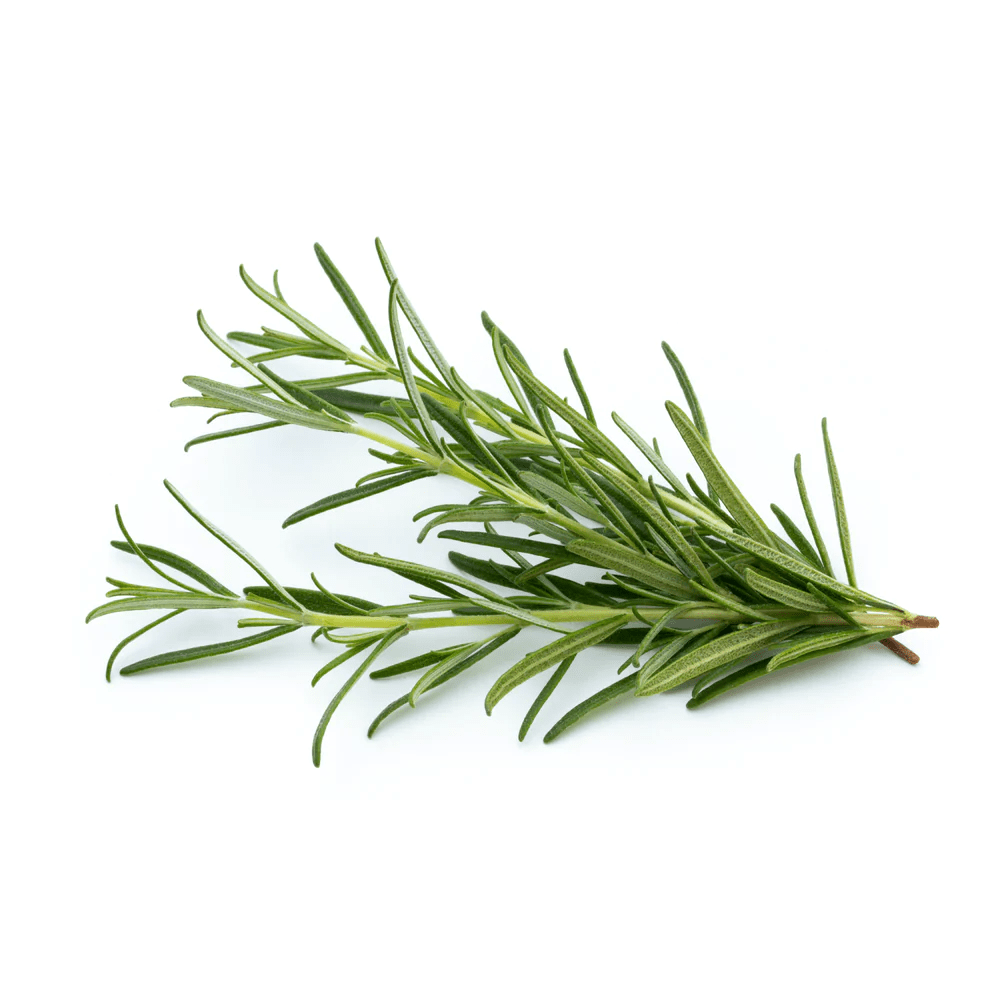Rosemary
Salvia rosmarinus L. – Lamiaceae

Opinions are divided about the name of the plant, but the prevailing opinion is that the name Rosmarinus comes from Latin, which means sea dew. According to other sources, the name comes from the Greek language and means “bush with a pleasant smell”.
The ancient Greeks believed that it was a plant of beauty and dedicated it to Aphrodite (goddess of love, lust, beauty, pleasure, passion and procreation). In the Middle Ages, it was believed that rosemary drives away evil spirits, and for this reason it was used in all important periods of life: cradles were decorated with its fragrant sprigs, girls wore rosemary wreaths at their weddings, and the custom of adorning wedding guests with this plant has persisted to this day, since rosemary symbolizes love and fidelity.
Rosemary is an evergreen, aromatic shrub with upright or partially prostrate branches. The plant grows from 1 to 3m in height. Rosemary branches are densely covered with leathery, long, spiky, stalkless leaves. The upper side of the leaf is dark green, and the lower side is gray-white. The flowers are small, blue-violet, collected in inflorescences. The plant blooms twice a year, in April and September. The smell of the flowers and flower tips of the twigs is similar to camphor, and the taste is hot, aromatic and slightly bitter. It is a common shrub on the sunny and rocky sides of the coastal area, and as an ornamental plant it is grown in gardens and parks in continental areas as well.

Chemical composition: rosemary leaf contains 1.0-2.5% essential oil with the main components: 15-30% 1,8-cineole, 15-25% camphor, up to 25% α-pinene, about 8% camphene, 10-20% (+) borneol with 5-10% bornyl acetate and limonene and other monoterpenes. It also contains rosmarinic acid, flavonoids (including genquanine, luteolin and diosmetin) and their glycosides (genquanine-4′-0-glucoside), triterpene acids (5% ursolic acid derivatives), triterpene alcohols (betulin, amyrin) and steroids. Lipids are also represented by 97% of n-alkanes, isoalkanes and alkenes in leaf resin.
Rosemary exhibits antimicrobial activity against gram-negative microorganisms (Escherichia coli and Pseudomonas aeruginosa) and gram-positive bacteria (Staphylococcus aureus, S. epidermidis and Micrococcus luteus).
Rosemary contains ingredients capable of effectively neutralizing free radicals. It is believed that the carrier of this activity is carnosolic acid, which is a lipophilic antioxidant and a good “catcher” of singlet oxygen, hydroxyl and peroxyl radicals that affect the breakdown of biological membranes. Bracco and sar. showed that of the 16 compounds isolated from rosemary, carnosolic acid and carnosol contribute the most to the antioxidant activity of the extract. The antioxidant activity of these two isolates is more intense than the activity of α-tocopherol, BHT and BHA. Due to its good antioxidant activity, rosemary extracts are widely used in the food industry today.
Rosemary is a good antiseptic, spasmolytic, astringent, carminative, diaphoretic, digestive and stomachic, so it is successfully used in the treatment of various disorders of the digestive system. It is considered a good antiseptic of the digestive tract, prevents and removes flatulence. It is used for the treatment of dyspeptic complaints, sluggishness of the stomach and lazy intestines.
Rosemary is a plant that has been used in traditional medicine in many countries since ancient times. The active ingredients of rosemary are responsible for the antioxidant, anti-inflammatory and neuroprotective effects of this plant. Researches have proven that this plant is used as a prevention or help in the treatment of Alzheimer’s and Parkinson’s disease. Also, studies have shown that rosemary shows a positive effect on the function of the central nervous system in post-covid 19 syndrome. In addition to having a beneficial effect on neurodegenerative diseases, such as Alzheimer’s and Parkinson’s disease, rosemary has also shown a positive effect on mild psychiatric conditions, such as stress, anxiety and depression.
References
- Effects of in vitro gastrointestinal digestion and colonic fermentation on a rosemary (Rosmarinus officinalis L) extract rich in rosmarinic acid
- Investigations into the specific effects of rosemary oil at the receptor level
- Antispasmodic activity of Rosmarinus Officinalis and Ruscus Aculetus
- Assessment report on Rosmarinus officinalis L., aetheroleum and Rosmarinus officinalis L., folium
- Potential Therapeutic Use of the Rosemary Diterpene Carnosic Acid for Alzheimer’s Disease, Parkinson’s Disease, and Long-COVID through NRF2 Activation to Counteract the NLRP3 Inflammasome
- Effects of Spices (Saffron, Rosemary, Cinnamon, Turmeric and Ginger) in Alzheimer’s Disease
- Effects of rosmarinic acid on nervous system disorders: an updated review
